Video Produced by Gabriela Quirós
Newt Sex: Buff Males! Writhing Females! Cannibalism!
The Japanese Pool at the University of California Botanical Garden in Berkeley was built in 1941. Stones from Japan line its edges, and a small Japanese-style bridge offers visitors a place to sit and contemplate the water’s surface. It looks peaceful, but beneath the surface is a riot of writhing activity: the newts have come to town.
California newts (Taricha torosa) have marched in from the surrounding forests by the dozens (some years there are hundreds), to mate and lay eggs in the pond. Most of the time, California newts live quiet, hidden lives in the forests of California. But every winter – and newts can live for 20 years – they return to mate in the same ponds in which they were born.
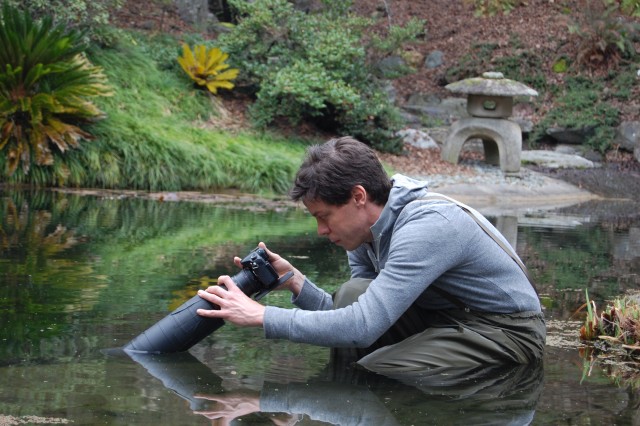
These amphibious creatures are about five to eight inches long, with rust-colored skin, except for their bright yellow eyes and belly. They began to arrive at the UC Botanical Garden around November, and will stay here for the duration of the rainy season, usually through the end of March.
Paul Licht, director of the garden, has been observing the newts in the Japanese Pool for 12 years, since he became director in 2003. But his fascination began long before that, as he studied newts and newt hormones for more than 40 years as a zoologist at the University of California, Berkeley. In those days, he says, he never just sat and watched them like he does now.
“I was usually out collecting them in the field,” he says, “or doing experiments with them in the lab.”
Now, Licht enjoys simply observing them, year after year.
“They’re a very special kind of animal,” he says.
While California newts are only about six inches long, they might travel as far as three miles to return to their birthplace. That’s the equivalent for a human of walking about a marathon and a half, without any signs or road maps. Scientists aren’t sure exactly how they find their way, but they think it might be based on smell.
Victor Twitty, a biologist at Stanford University in the 1960s, tampered with the olfactory organs of a related species, the red-bellied newt (Taricha rivularis) and observed that they had a hard time getting home, while undamaged newts were able to get back to their ponds with astounding accuracy, even when he moved them miles away to places they had never been before.
Their migration takes them out of the burrows where they spend the rest of the year, eating bugs and living a terrestrial life in the forests along the California coast. It starts with the release of a hormone called prolactin, the same chemical that helps women breastfeed. In newts, it triggers an urge to head towards the water they were born in, and in males it combines with testosterone to induce a physical transformation that prepares them for the months they will spend in the water, fighting over females and engaging in an elaborate mating ritual.
As they get closer to the pond, the males’ skin transforms from pimply and rough to slimy and smooth. They bulk up, and grow pads on their feet for clamping onto females. Their tails flatten, grow wider and turn into fins that will power them through the water. When the breeding season ends, they emerge from the water, slim down, dry out, and re-adapt to a land-based lifestyle.
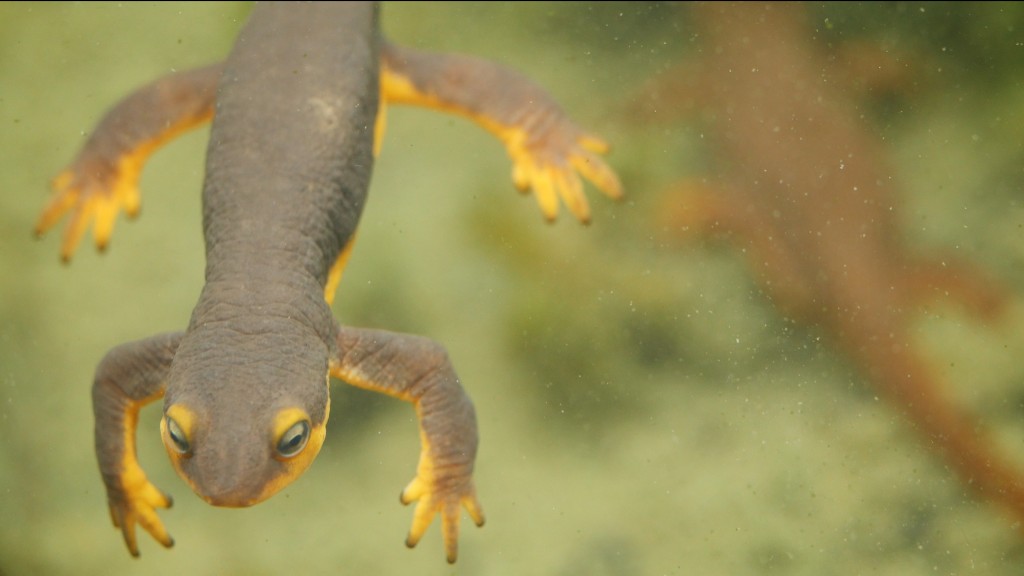
“It’s a rapid change in phenotype, year in and year out,” says Sean Reilly, a graduate student who studies newts in the integrative biology department at UC Berkeley.” These newts are pretty amazing.”
Newts generally enjoy a relatively safe existence, protected by a poison in their skin called tetrodotoxin, one of the world’s most potent neurotoxins. It’s the same poison found in Japanese puffer fish that occasionally kills adventurous sushi eaters –23 people were fatally poisoned in Japan between 2000 and 2009. The bright coloring of the California newt, and their even more toxic cousin, the rough-skinned newt (Taricha granulosa), warns most predators that they’re a bad choice for a meal.
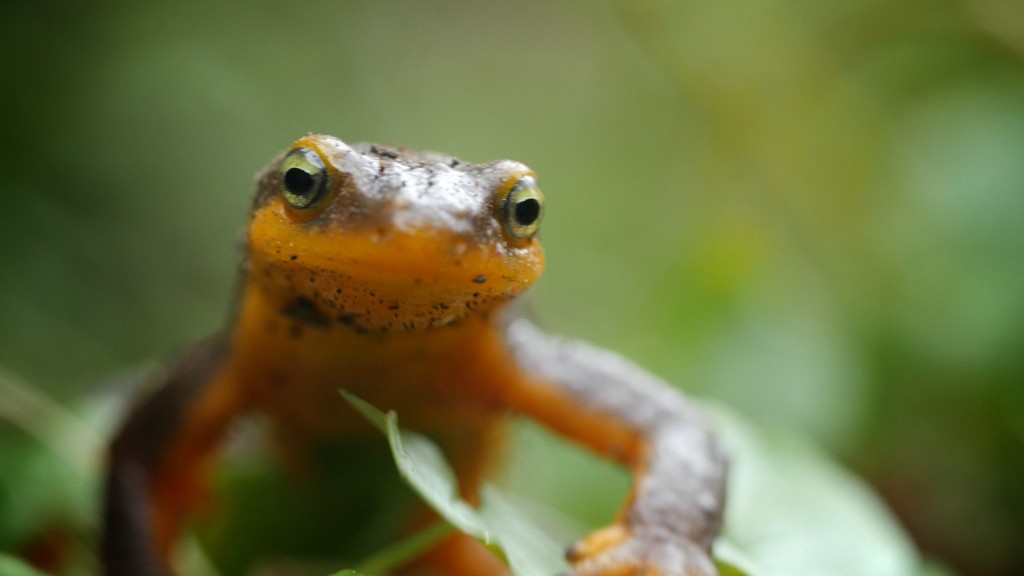
But there’s one exception, a predator that doesn’t need to heed this warning: the garter snake.
Newts and garter snakes are locked in an epic struggle that Jim McGuire, a herpetologist at UC Berkeley, calls a “co-evolutionary arms race.” Some of the snakes in the newt’s habitat have evolved immunity to tetrodotoxin, and in response, some newts have become even more toxic.
“There’s essentially a geographic mosaic across the West,” McGuire says.
In some places, newts are very toxic and can keep the snakes at bay. But in other places, “it seems like the garter snake has essentially won,” and the newts are less toxic, he says.

When newts begin their annual odyssey from the forest to the water, they often encounter dangers that even the strongest poison can’t protect them from. Cars driving through their territory aren’t deterred by the newts’ bright colors, and road crossings can be the most dangerous part of a newt’s journey. Excluding the dangers of cars and roads, McGuire says, “It’s hard for me to imagine that many of them would be prevented from making it to their breeding site.”
Neighbors of Tilden Park, just a few miles from the Japanese Pool, became concerned a few years ago by the newts they were finding flattened on the road. They persuaded the park to close a road in the newt’s migration path from November to March to protect them.
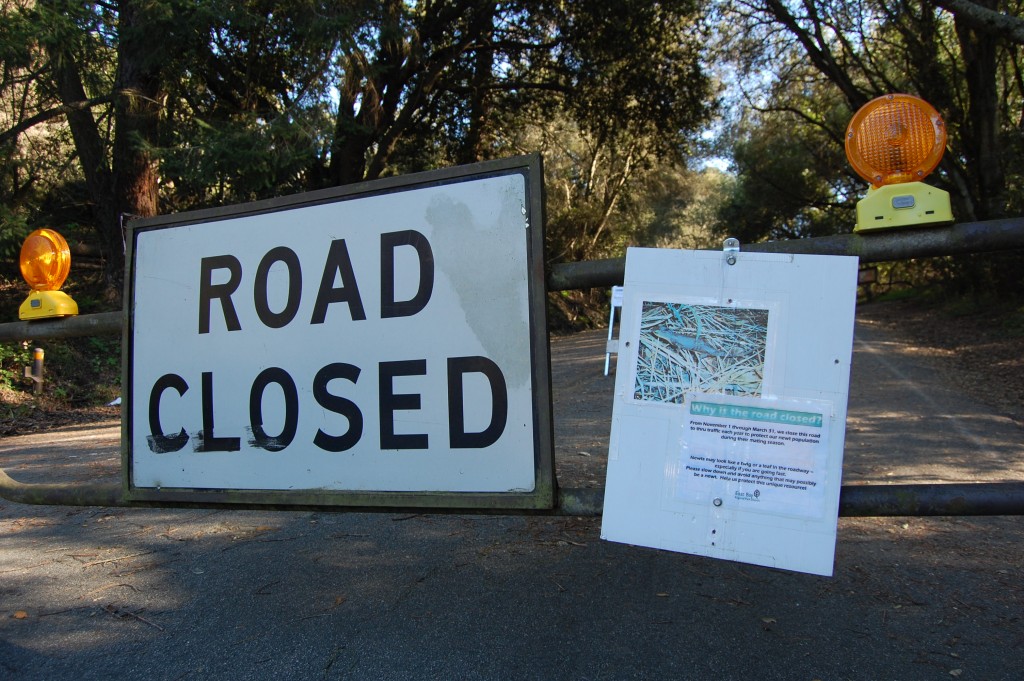
But closing roads may not be the only protection they need. Licht said that during the past two years he’s seen the lowest numbers of newts and newt eggs since he started working at the garden. California newts aren’t currently endangered, but Licht is concerned by the decline that he’s seen in the Japanese Pool population.
“Last year, the whole season we only saw one egg cluster,” he says.
Normally, he sees hundreds, dotting the pond’s muddy bottom and hidden in the vegetation. The male newts are even known to snack on a few of them for extra protein, adding cannibalism to the newts’ yearly ritual.
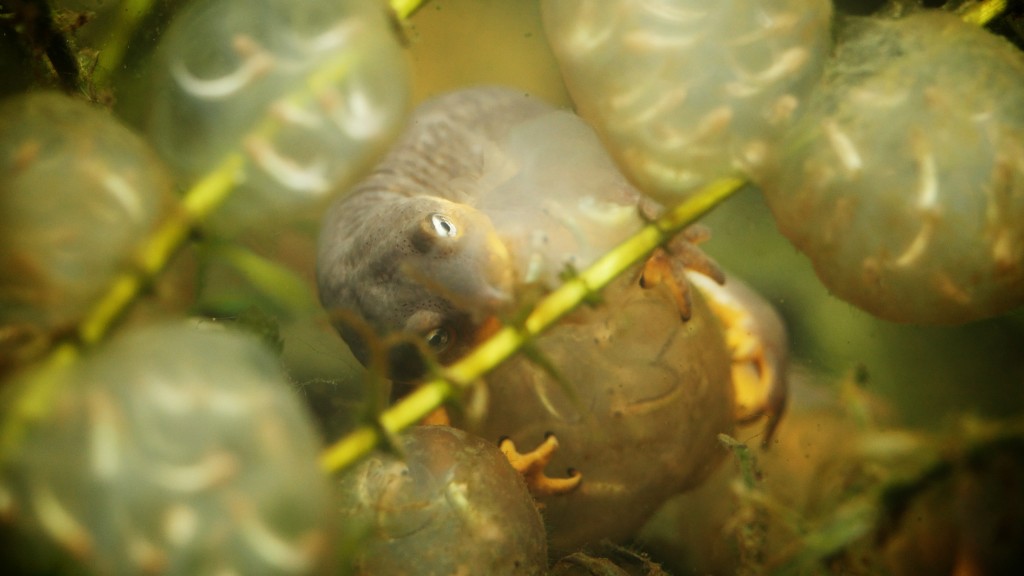
There were more egg clusters this year, but still many fewer than usual. Licht doesn’t know what caused the downturn. He says it might be due to California’s severe drought, now in its fourth year, but naturalist James Wilson with the East Bay Regional Park District, reports he’s seen normal numbers this year at breeding sites only a few miles away from the Japanese Pool.
We may never know why they almost disappeared from the Japanese Pool, Licht says, but he’s glad to see a few more this season.
“We mostly study them when they come to breed, we don’t know what they do the rest of the year,” he says. “There’s still a lot of mystery.”